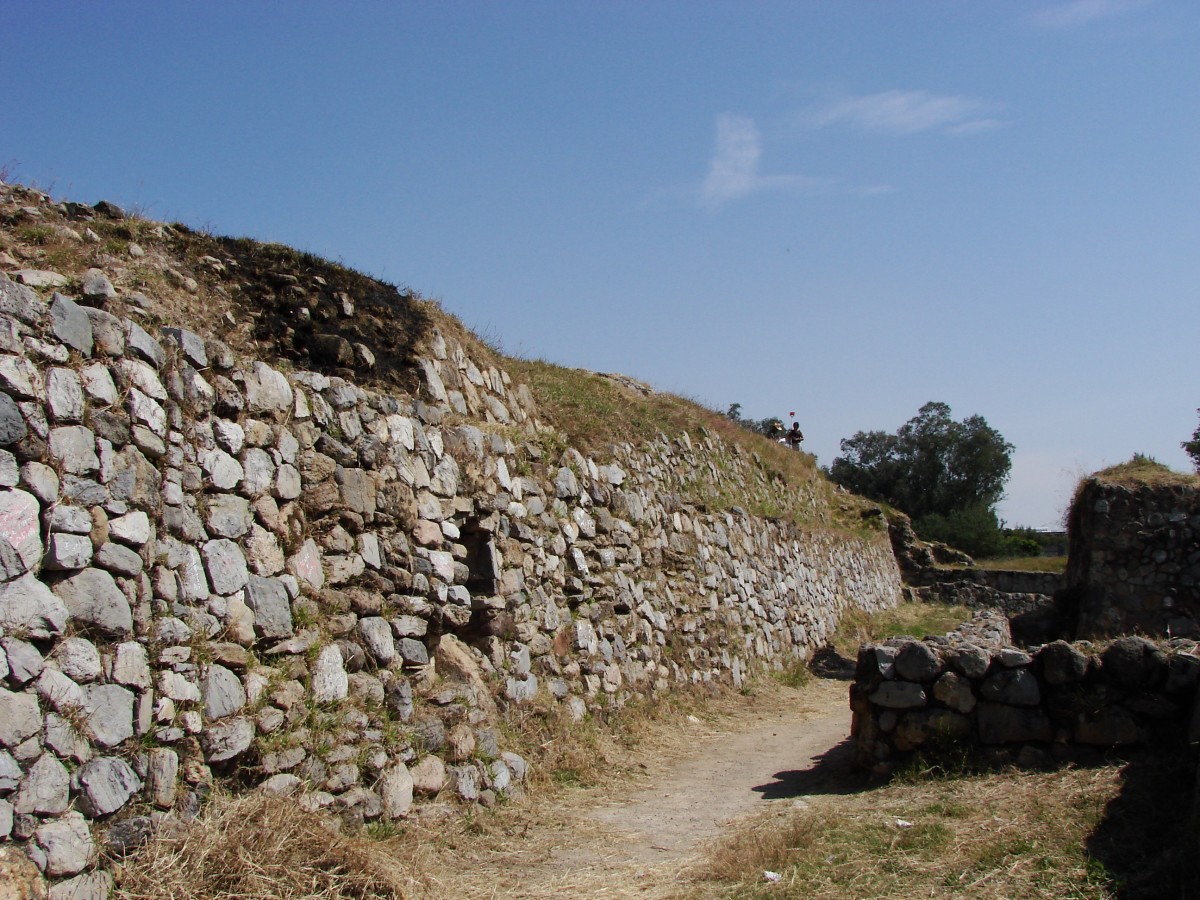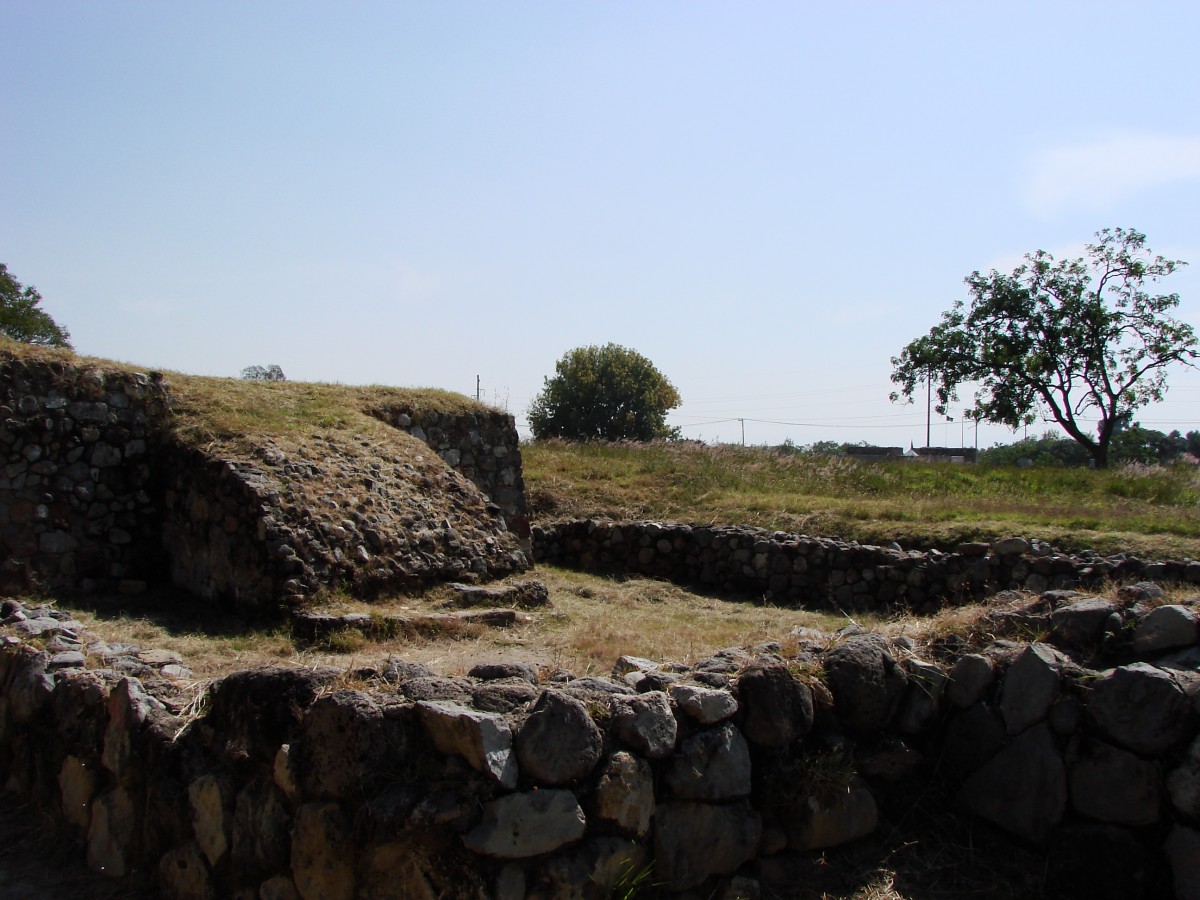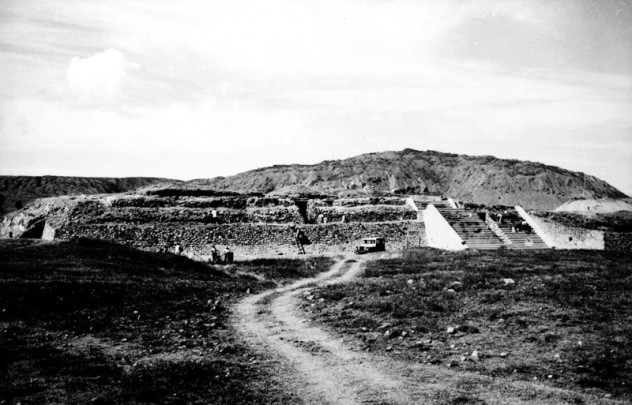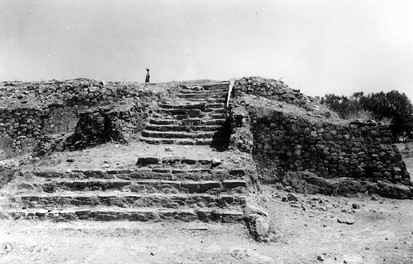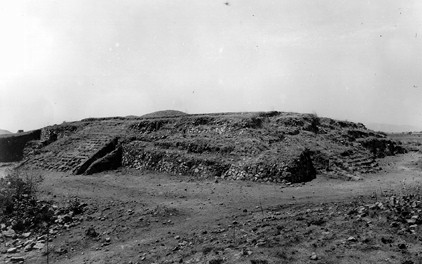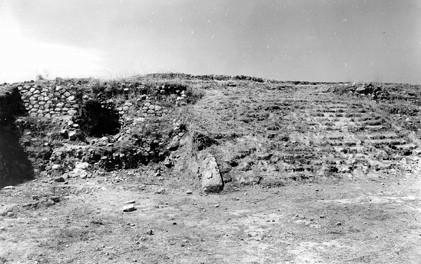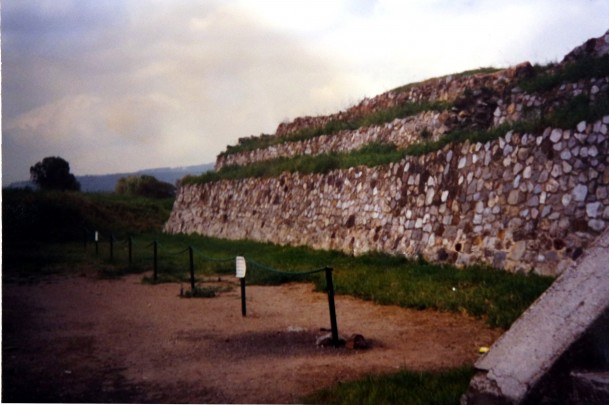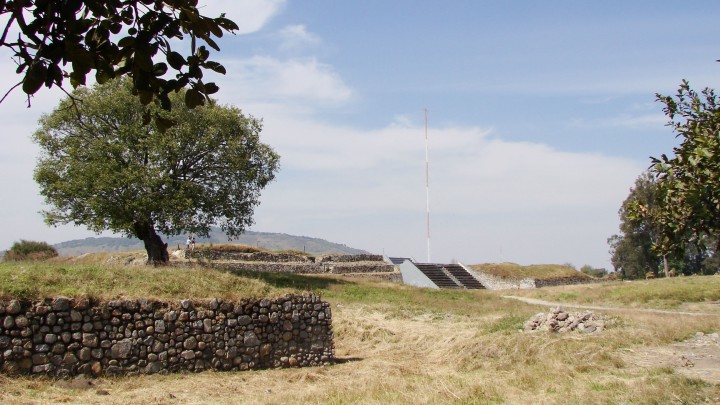Ixtépete
Obsidian hill
Situated on the outskirts of Guadalajara, this was an important trading center. Apparently its society was very hierarchical, since artisans and the common people lived in small surrounding neighborhoods, separate from the residences of the elite. The principal temple is worth a visit.
About the site
The Ixtepete site is in the central region of Jalisco, in the valley of Atemajac, within the Guadalajara conurbation. In pre-Hispanic times this site was surrounded by very fertile land capable of being used for farming. There were also lakes and shallow lagoons.
The first reports of Ixtepete go back to 1844 when Fray Manuel de San Juan wrote of the existence of “some tombs or cuys.” Nevertheless it was not until the mid-twentieth century that José Corona Núñez began archeological work. Structures I, II and III were excavated and consolidated between 1955 and 1960.
César Sáenz carried out a second period of fieldwork between 1965 and 1966, carrying out consolidation work on the stairway and the incomplete panels, as well as on the reconstruction of the three volumes of the principal facade of structure 1. Another very important project was carried out in 1973 by Marcia Castro Leal, Luis Javier Galván and Lorenzo Ochoa in 1973, using stratigraphic wells to explore Structure III, and in the process drawing up a topographic map of the site. Two years later Javier Galván and Otto Schöndube carried out archeological rescue work after making an important discovery of a burial in the shaft tomb tradition.
It is thought that the site had important trading links, above all with regions such as the Jalisco Highlands and La Quemada in Zacatecas. It formed part of a larger complex which included two other population centers: Los Padres and Tizate, as well as Santa Ana Tepetitla. The inhabitants of the site were subject to a strict hierarchy, something that may be concluded from the funerary space destined for the use of the elite with box tombs, and also from the evidence of small residential districts inhabited by workers in ceramics, stone artifacts and other goods. The site’s first inhabitants shared the shaft tomb tradition along with the majority of western Mexico. They subsequently became part of the dominant Mesoamerican culture of the Classic period, incorporating slope and panel construction into their architecture, the layout of three temples surrounding a patio, with ring shaped ceramic vessels, as well as stylized representations of the plumed serpent and Teotihuacan II-type figurines.
The first reports of Ixtepete go back to 1844 when Fray Manuel de San Juan wrote of the existence of “some tombs or cuys.” Nevertheless it was not until the mid-twentieth century that José Corona Núñez began archeological work. Structures I, II and III were excavated and consolidated between 1955 and 1960.
César Sáenz carried out a second period of fieldwork between 1965 and 1966, carrying out consolidation work on the stairway and the incomplete panels, as well as on the reconstruction of the three volumes of the principal facade of structure 1. Another very important project was carried out in 1973 by Marcia Castro Leal, Luis Javier Galván and Lorenzo Ochoa in 1973, using stratigraphic wells to explore Structure III, and in the process drawing up a topographic map of the site. Two years later Javier Galván and Otto Schöndube carried out archeological rescue work after making an important discovery of a burial in the shaft tomb tradition.
It is thought that the site had important trading links, above all with regions such as the Jalisco Highlands and La Quemada in Zacatecas. It formed part of a larger complex which included two other population centers: Los Padres and Tizate, as well as Santa Ana Tepetitla. The inhabitants of the site were subject to a strict hierarchy, something that may be concluded from the funerary space destined for the use of the elite with box tombs, and also from the evidence of small residential districts inhabited by workers in ceramics, stone artifacts and other goods. The site’s first inhabitants shared the shaft tomb tradition along with the majority of western Mexico. They subsequently became part of the dominant Mesoamerican culture of the Classic period, incorporating slope and panel construction into their architecture, the layout of three temples surrounding a patio, with ring shaped ceramic vessels, as well as stylized representations of the plumed serpent and Teotihuacan II-type figurines.
Practical information
Temporarily closed
Monday to Sunday from 08:00 to 17: 00 hrs.
Free entry
Se localiza sobre la Prolongación Av. Mariano Otero, aproximadamente 100 m al poniente del entronque con el Periférico, en la ciudad de Guadalajara.
From downtown Guadalajara the site can be reached on bus route 626.
Services
-
+52 (333) 613 1075
-
This email address is being protected from spambots. You need JavaScript enabled to view it.
Directory
Encargado
Centro INAH Jalisco
+52 (333) 614 5416



